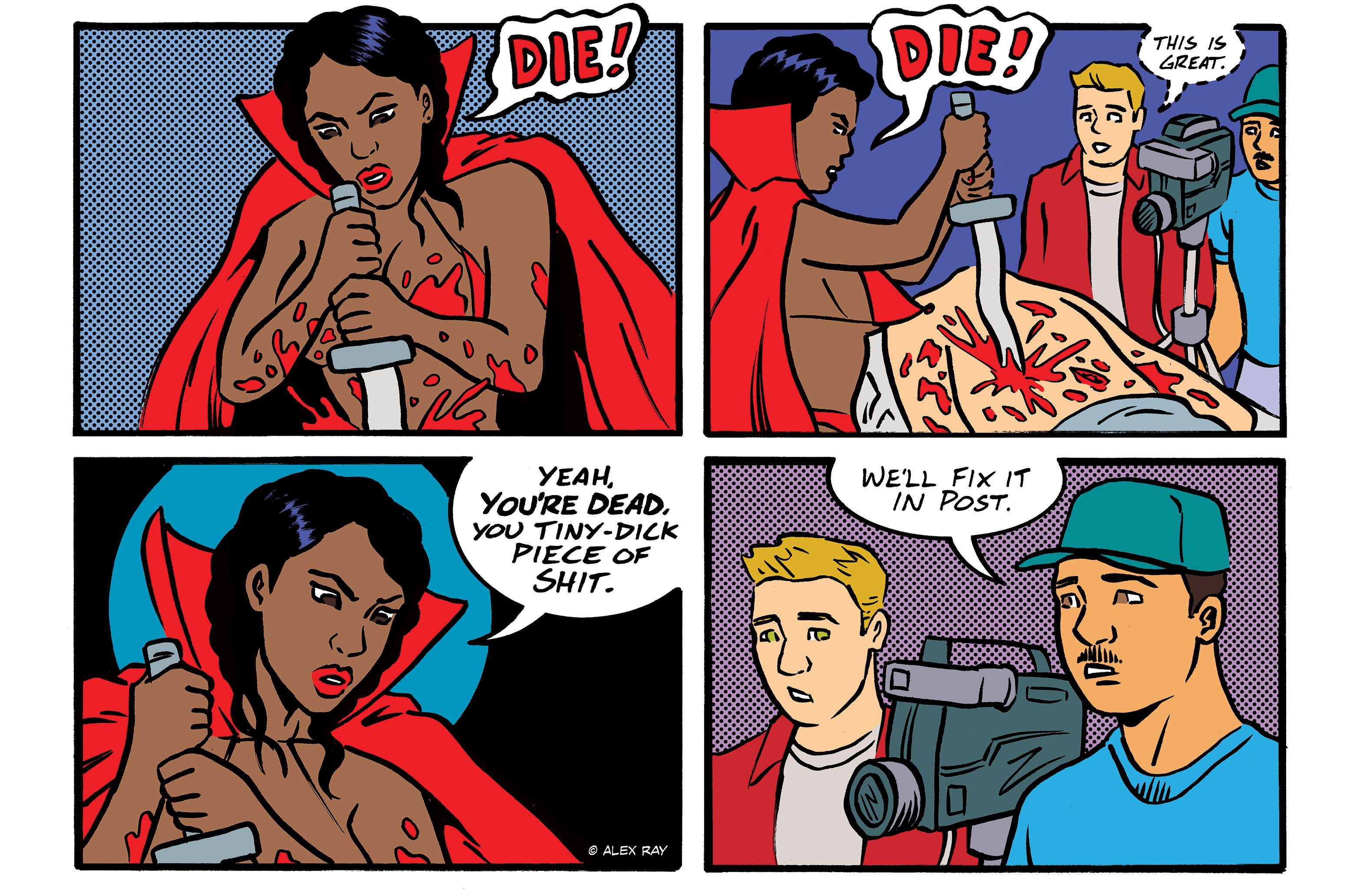
With over 150 films to her credit, a few were bound to slip through the cracks. As a big fan of Michelle Bauer, I’ve made it my mission to nab those movies that were only released on VHS and still haven’t found their way to any kind of digital video disc. While certain tapes were more expensive than others, I have no regrets. Whether she picked really fun projects to work on or just imbued them with a little extra entertainment value, Michelle’s movies are a guaranteed good time—which makes the obscurity of some all the more tragic. Here are a few worth rediscovering.

I’m sure a lot of folks have seen Demonwarp, even if it hasn’t had an official disc release. This smorgasbord of horror tropes is just too wild to stay buried. We’ve got Bigfoot, aliens, zombies—and, of course, Michelle. Her role seems primarily designed to meet the T&A quota, yet she manages to be just as memorable as the various monsters on display. Before Miss Bauer enters the fray at the halfway point, George Kennedy attempts to warn a bunch of kids about a creature lurking in the woods near their cabin. Of course, they don’t take him seriously until a were-squatch actually makes an appearance. Things just get crazier from there, setting us up for a truly ridiculous finale. I wouldn’t want to spoil this for anyone who hasn’t had the pleasure, so suffice it to say that the final act delivers more bonkers thrills and chills than ninety percent of home-video horrors. If you’re into all-out wackiness like Spookies, you definitely need to get warped. Usually around fifty bucks, this one’s well worth finding on tape. However, any of the video sites to which I’m sure it’s been uploaded will satisfy anyone’s need for eighties cheese. Sadly, Demonwarp isn’t perfect—I mean, Michelle only has a few minutes of screen time. Let’s move on to a flick where she really gets a chance to shine.

Eerily similar to the same year’s Destroyer (not to mention Shocker, Prison, etc.), this Camp production adds a few extra ingredients to the haunted prison subgenre. Forty years after disgraced movie mogul Otis Wilcox was put to death, his former studio is being run by a mobster and an egomaniacal director. The latter is married to Michelle Bauer’s character, who happens to be the granddaughter of the dead studio head. This would all make for interesting drama, even if Otis didn’t come back from beyond the grave and start adding the crew to his dinner menu. Shot on video with a much lower budget than any of those other prison horror flicks, Death Row Diner is still my favorite cheesy jailhouse dish. It combines offbeat humor with gooey, over-the-top gore and long scenes of Jay Richardson and Michelle hamming it up as they hash out their relationship troubles. It’s full of disparate elements that don’t always mix well, but somehow form a wonderful mélange. When Michelle finally meets her undead grandpa, their reunion leads to a perfectly weird ending to a deliciously bizarre movie. This Diner serves up the best flavors of shot-on-video horror on a silver platter, with its own unusual garnish. The tape goes for a lot more than Demonwarp, so it’s probably worth tracking down online before making that investment. However you see it, you’re in for a unique experience, at the very least. And you might just love it as much as I do. Bon appétit!

What happens when eighties porno guys make a horror-comedy? Well, Night of the Living Babes, apparently. The result of director Gregory Dark and writer Anthony Lovett’s foray into mainstream filmmaking is actually one of my all-time favorite movies—maybe because it has such non-mainstream sensibilities. Anyone expecting an actual Romero parody or homage will be disappointed, since it’s really just a comedy with a couple horror tropes. Still, as a horror fan, I totally loved it. There’s enough moody lighting and colorful set pieces for any eighties horror flick, all crammed into a tight, hour-long package. The story is padding-free right from the start: two married buddies go in search of a hot new “zombie” brothel, assuming it has some kind of punk and goth theme. When they arrive, the pair are kidnapped by Madame Mondo and her harem of pink-haired zombie babes. This leads the guys’ wives—played by Michelle Bauer and Connie Woods—to go in search of the adulterous duo. Michelle’s character is already pretty suspicious of her husband, and this provides many opportunities to absolutely chew the shit out of all available scenery. Miss Bauer’s performance is delightfully over-the-top, matching the material perfectly. Everything about this one-hour feature goes overboard, from plot and dialogue to sets and costume design. The whole cast has great chemistry, especially Michelle and Andrew Nichols (as her lecherous husband). They were in Cafe Flesh together, a hardcore sci-fi flick that was most likely the actors’ connection to the Dark man. I would love to know the real history of this one, but that remains as elusive as the tape. I’ve read many of Michelle’s interviews and have yet to find any info about Babes. It is pretty obscure, though. I had an eBay saved search on for at least a year before a tape popped up. You’re gonna have to see this one online, unless you feel like dropping over a hundred bucks for the sweet, sweet VHS. I highly recommend watching it any way you can that doesn’t include clicking a series of shady links. Night of the Living Babes is my favorite movie that hasn’t yet been released on DVD, topping Alien Beach Party Massacre, Deadlock, Beauty School, Hollywood Boulevard 2, and the two other flicks reviewed here. Until such time as all of Michelle’s epics have deluxe Blu-rays, I hope they stay in the hearts and minds of horror freaks looking for truly enjoyable movies.

When I first saw Sorority House Vampires From Hell, I fell in love. It’s a horror-comedy with all B-movie essentials and strong female protagonists—basically, everything I’m looking for. Just try to deny that this sounds awesome: sorority pledges take on a vampire queen and her minions, with everything from parody music videos to surfer-dude subtitles thrown in for good measure. Of course, I wanted to know if the filmmaker had done anything else in a similar vein. That’s where things got complicated.
I was thrilled to discover that director Geoffrey de Valois had actually made two other vampire films: The Vampire Conspiracy and Vampire Centerfolds. Finding a way to see them would be another matter entirely.
But before I jump ahead and start connecting red string to the notes on my bulletin board, let’s get back to Sorority House Vampires. Turns out that was originally the whole title, until From Hell was tacked on for its DVD release. As I found more info in old issues of Draculina, I began to unravel the long, twisted history of this very unusual sorority.
Though shot in the early nineties, a falling out with the producer led to the movie being shelved for a few years. Dennis Devine (Dead Girls, Fatal Images), who had worked on the story, re-shot and cut out segments of the film before releasing it on VHS. I haven’t been able to find this version of the movie yet, so I can’t speak to the extent of the changes. According to Raymond Honeycutt, who then acquired the rights and released this baby on DVD, some of the funniest stuff was removed. If the zombie fashion show got cut, I’m gonna be real miffed when I eventually get my hands on that tape.
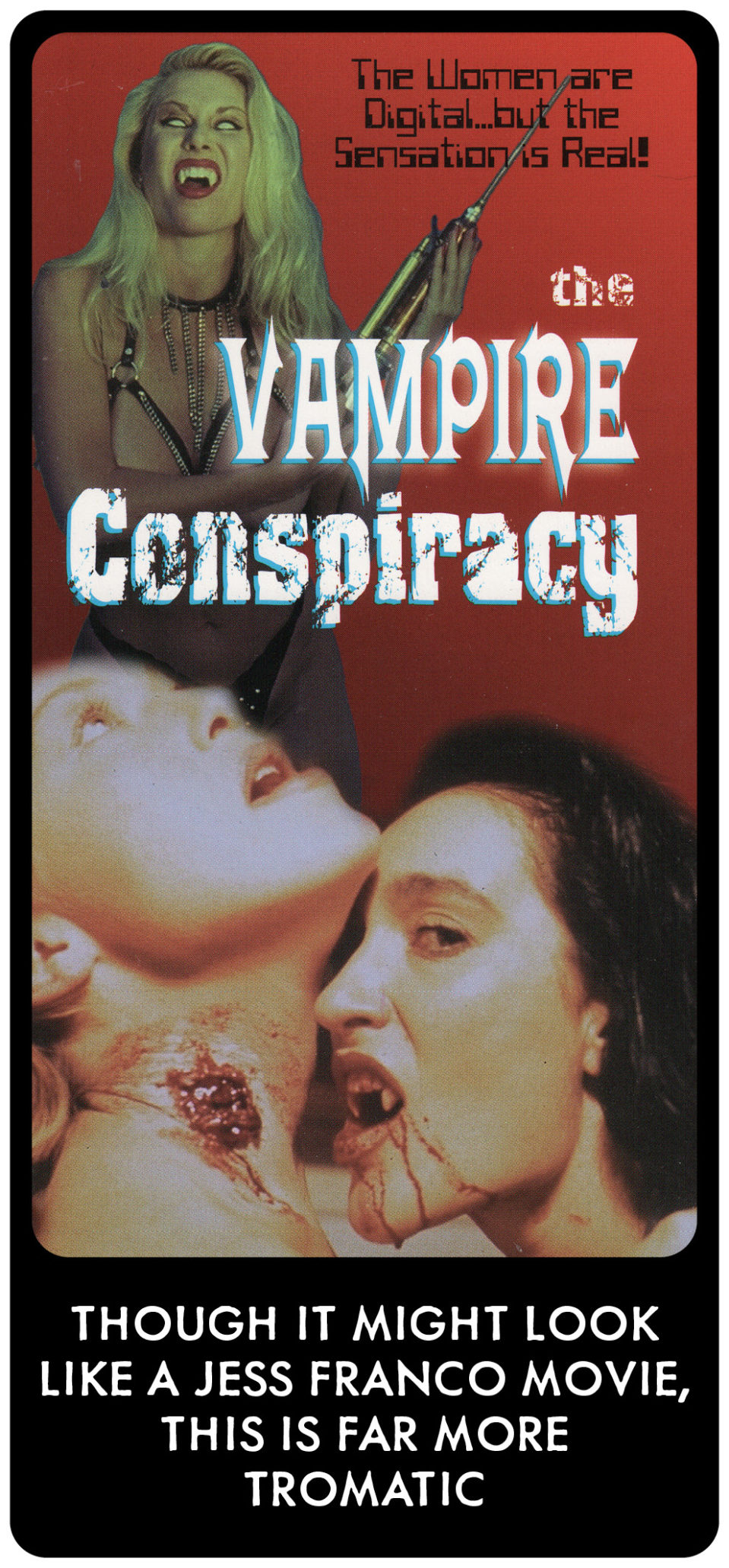
In an interview with Draculina, Honeycutt provided a lot of context. He was apparently just a well-meaning fan looking to finish the movie and get it on disc. With the blessing of the director, he set out to procure the master tapes and shoot a new intro and outro. He ultimately added his segments to de Valois’ rough cut and made that available to weirdos like me. Hey, I’ll take it. While its road to release was long and full of obstructions, this first chapter in the trilogy is still the easiest of the three to find.
Even as his original vampire epic was languishing unseen, Geoffrey de Valois was working on a follow-up. Bigger and bawdier, it was then known as The Vampire Conspiracy. This time around, vampires are using technology to capture slaves for the purposes of mutant-birthing (with the ultimate goal of world domination, of course) as a sorority pledge battles her personal demons until she becomes a literal monster and embarks on her own sorority house massacre. Even more wild than it sounds, this movie is an absolute favorite. Just like SHVFH, it’s a women-driven horror-comedy with a surplus of things one might expect from a flick with a cover like this. And lucky for you, the director has uploaded it to YouTube and Vimeo as The Dark Gift.

That initially confused the heck out of me, since I stumbled upon the online version before I tracked down the VHS release of The Vampire Conspiracy. Put out in 1998 by Salt City Home Video (purveyors of Savage Harvest and other SOV greats), it’s now pretty tough to find. But between the tape and the photo-comic produced by Draculina, I was able to determine that The Dark Gift is mostly The Vampire Conspiracy, with a couple scenes from Vampire Centerfolds.
What’s Vampire Centerfolds, you ask? Such a question vexed me as well—for several months. There’s almost nothing online about it, and the VHS is even more elusive than its predecessor. But after spending a lot of time and several hundred dollars on this pursuit, I have finally solved the mystery of Vampire Centerfolds. So it’s kind of a behind-the-scenes documentary covering both Sorority House Vampires and Vampire Conspiracy, with a new wraparound story and a couple other scenes that made their way into The Dark Gift. I was a little disappointed at first that it’s not another feature film, but seeing the making of two faves is still pretty darn fun.
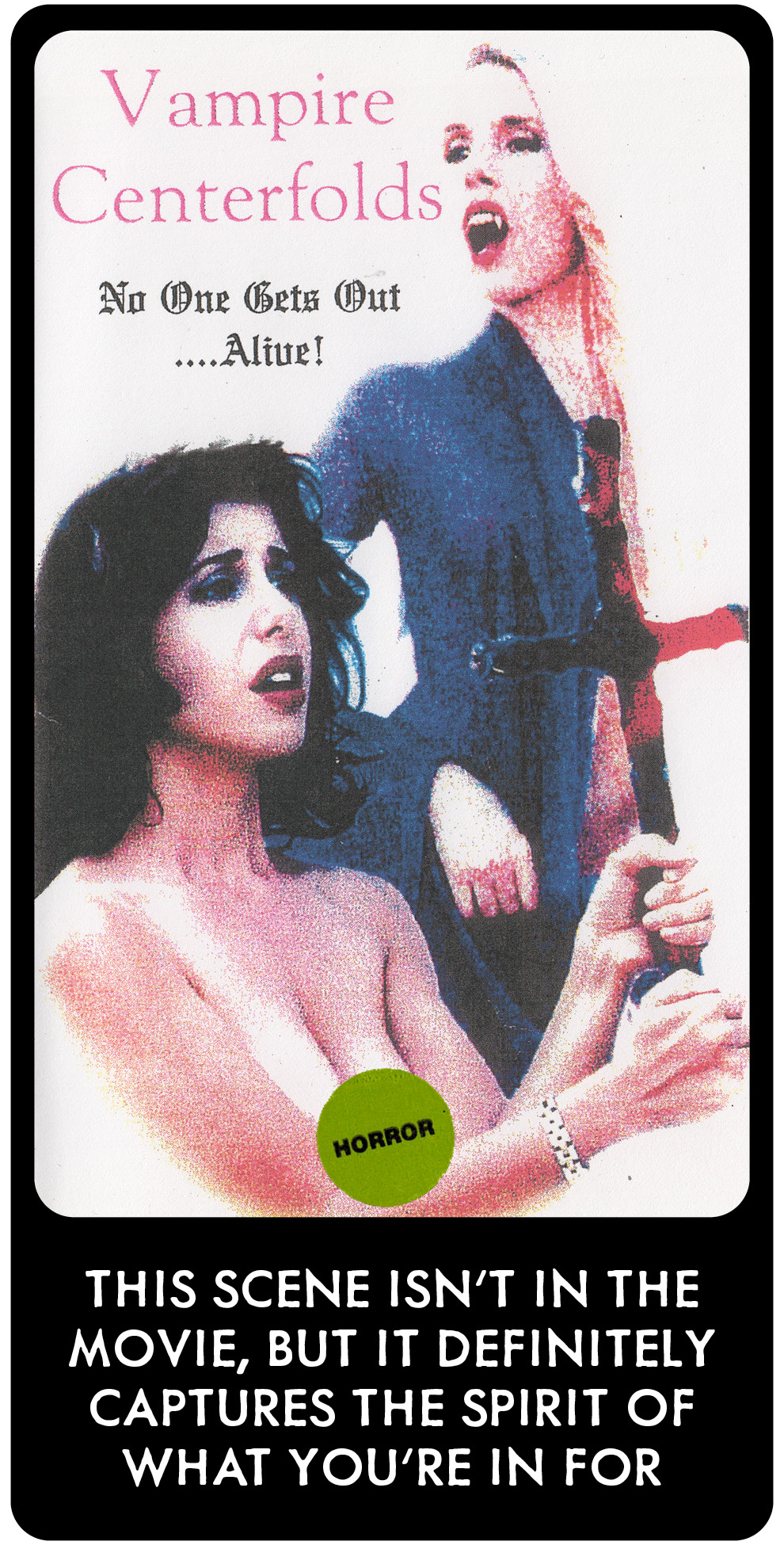
I just wish that an impossibly rare VHS tape wasn’t the only way to see it, and would really love for Vampire Conspiracy to get a proper DVD release. There’s so much unwatchable dreck that’s very easy to find on disc, yet these movies that I genuinely enjoy remain so elusive.
The late nineties were a very weird time for low-budget horror. Too many films were lost to the dwindling video market before DVD created a resurgence. I’m so glad to have discovered this series—if only it hadn’t taken months of searching to actually see all the movies. Vampire Conspiracy reminds me of the best Troma flicks, with its crazy plot, wild visuals, and offbeat sensibilities. There aren’t many films I’d be more excited to buy on disc. And Vampire Centerfolds would at least make a great special feature.
Until that happens, I highly recommend checking out the online version of The Dark Gift available on the director’s channels. And if, like me, you’re cuckoo for multipacks, there are many ways to get your hands on Sorority House Vampires.

A documentary featuring Roger Corman, Jim Wynorski and Julie Strain? Guaranteed good time, right? Eighty minutes of crazy anecdotes set to goofy visuals?
Yeah, this is not that.
Unlike more recent documentaries chronicling the work of Roger Corman, such as Corman’s World and Machete Maidens Unleashed, there really isn’t anything fun or whimsical about Some Nudity Required. But then, it isn’t so much about Corman as it is an indictment of the movies he makes, and others like them. There’s also a self-reflexive through-line that goes into some pretty dark territory. So it’s not exactly a light-hearted romp exploring the wacky and wild world of B-movies.
Director and star Odette Springer scored some of Corman’s flicks in the nineties, and makes no bones about how much she despised the material. Based on her experience and insight—and maybe some personal issues (that’s not a dismissal; her background is used to drive the narrative)—she feels very strongly that B-movies degrade women, and the people making the movies exploit those women on screen and off.
Springer comes out swinging with Maria Ford’s death scene from Slumber Party Massacre 3. In or out of context, it would be hard to defend (imagine if a scene from Henry: Portrait of a Serial Killer got spliced into, well, Slumber Party Massacre 3). Sure, it could be argued that the third chapter in our favorite slasher trilogy wanted to make a statement about violence towards women in film, but not everyone in the audience is going to grasp that subtext (I certainly didn’t when I first saw it as a teenage boy).
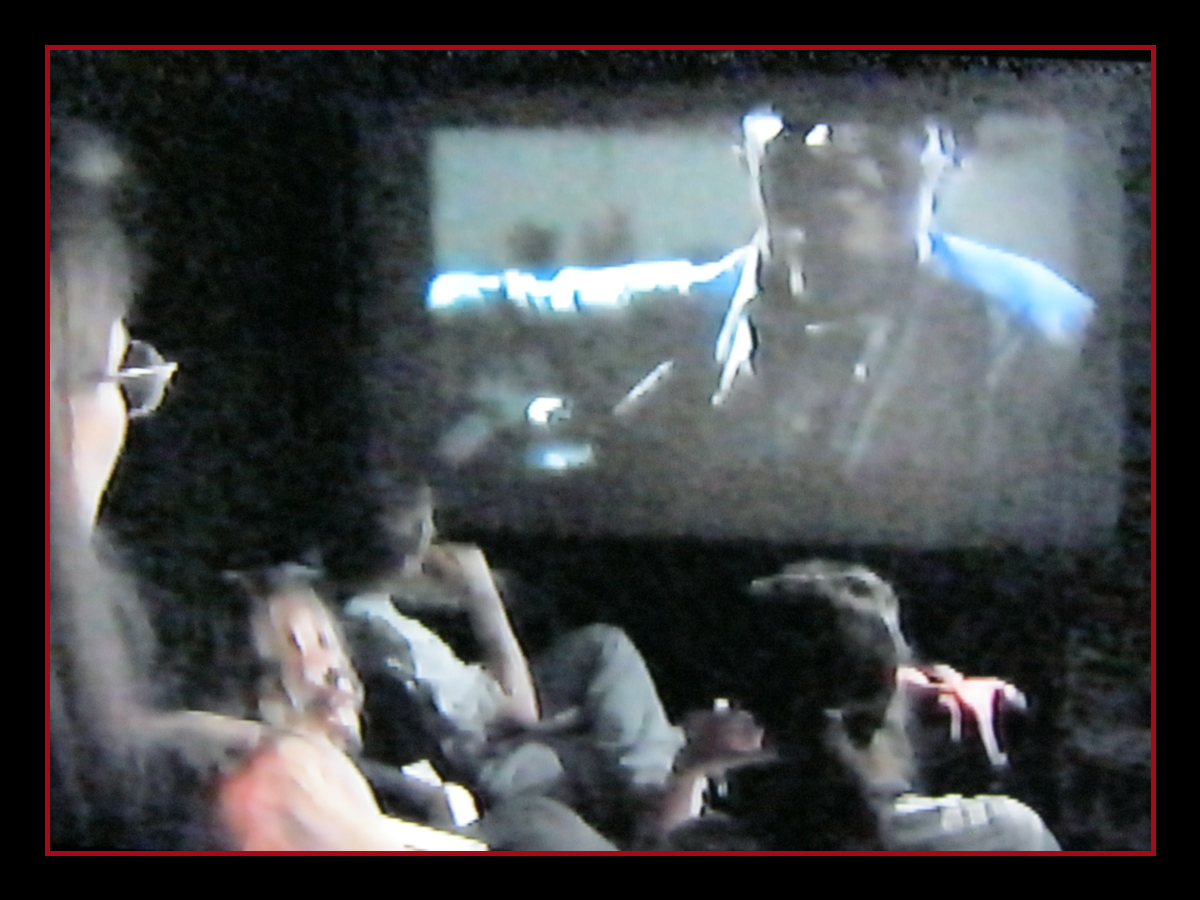
Maria’s interviews go on to paint the B-movie factory as dishonest, lecherous and sometimes downright vile. If what she says is true, then there are some pretty shady people making movies (okay, not the hardest thing to believe). Numerous references are made to her and others being encouraged to get breast implants, and if you watch Perfect Fit (made three years after this doc), it’s fairly apparent she was eventually convinced to go under the knife. Of course, me noticing that might just confirm one or two of the movie’s assertions, so I’ll digress.
I initially saw this about fifteen years ago, and, as a young horror and exploitation fan, it did color my opinion of how some of my favorite movies were made (yes, I just might consider Chopping Mall one of my favorite movies). While it was clear this doc had an axe to grind, it’s got a lot of real actors and directors speaking candidly—and mostly negatively—about the movies they’ve worked on.
The only people really in favor of this brand of filmmaking besides Corman don’t always help their cause. That irascible Jim Wynorski comes off as the quintessential sleazy producer (but do check out the documentary chronicling one of his film shoots, Popatopolis—it’s illuminating). We’re left with a somewhat one-sided view of the B-movie biz, although that doesn’t automatically discount the points being made.
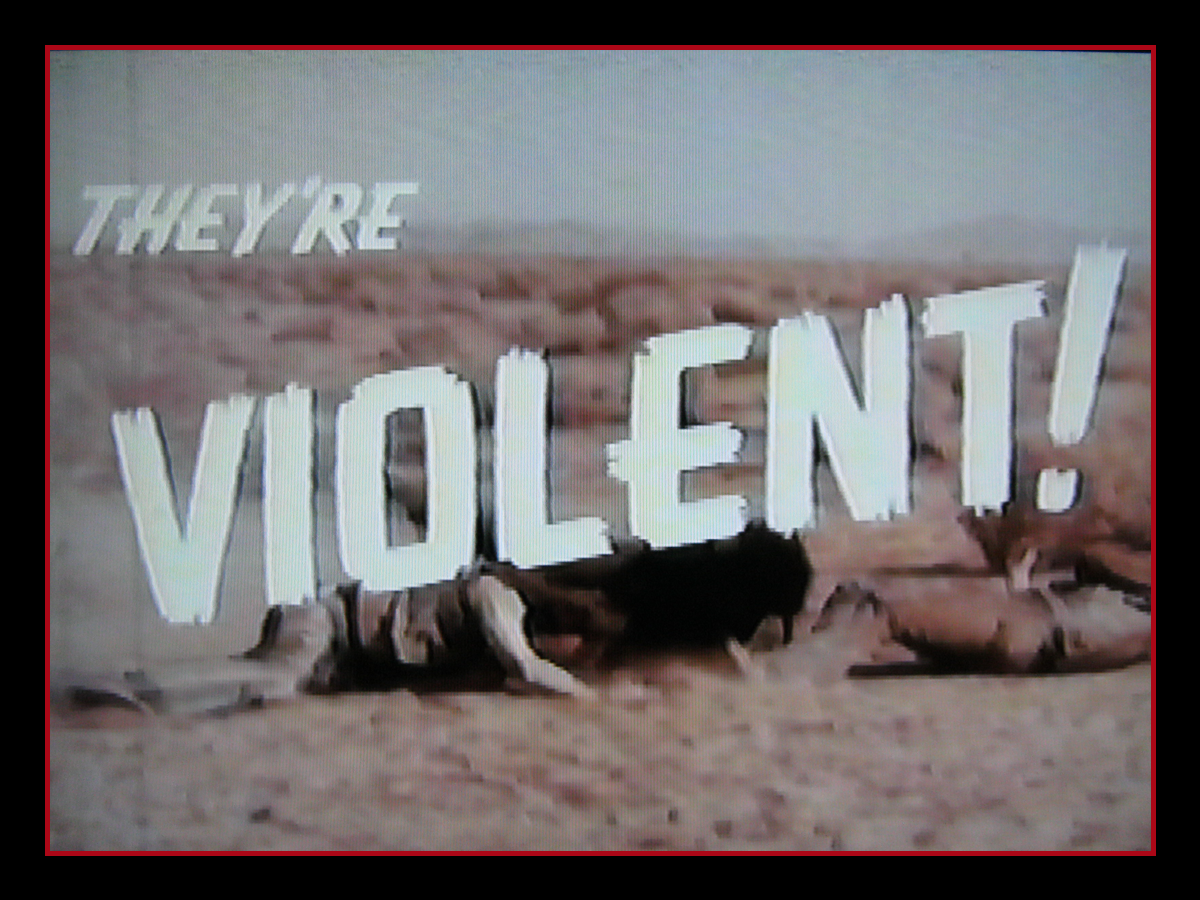
Why am I prattling on about a twenty-year-old, VHS-only documentary that sounds like kind of a buzzkill? Couple reasons. For one thing, it was made at a time when you couldn’t just throw a rock at the internet and hit a documentary about genre movies. Deserves some kudos for that. Also, it happens to be really compelling. Think nineties art-house version of an E! True Hollywood Story—but without the bars and blurs hiding the nudity. And whether or not it wins what seems to be its main argument—that exploitation movies demean and mistreat women—it poses some important questions and provides a lot of food for thought. Being a fan of this stuff is in my bones at this point, but it doesn’t hurt to consider why that is.
I would love to see a DVD release featuring a new interview of Springer and Corman, to see how everyone feels about everything now. Corman’s interviews imply he was unaware of the tone this documentary would take (or was just totally cool with it), and I would be really interested in hearing what he might say if his hackles got raised. He’s such a distinguished and eloquent guy, I think it would be fascinating to see him get into a serious debate.
Did I mention I’m a huge fan of Corman? Even so, it was easy enough to see Springer’s side of things, and I invite you to decide for yourself. I mean, if you feel like tracking this down. And paying a lot. And getting a little depressed about the kinds of movies to which you’ve sorta devoted a good chunk of your life.
Maybe just wait for the DVD.
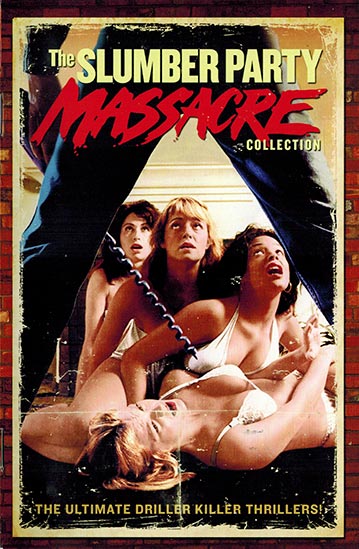
Being a horror fan for the last twenty years, I’m still disappointed that I didn’t get to experience the glory days of the scream queen in real time. Alas, queens of a particular kind of scream had their heyday in the early nineties and it would have been pretty inappropriate for a ten-year-old to be watching Sorority House Massacre 2 and reading Femme Fatales.
I’ve made up for lost time, of course—yet my knowledge of what it means to be a mistress of the macabre still comes from what are now historical documents. Mostly documentaries, actually. And I’m glad there are a surprising number of flicks examining the history and influence of horror heroines readily available. I’ve seen most of them, and I’m always on the lookout for something new, or something under the radar.
The DVD set has been in my collection for a few years now, but I never would have known about Sleepless Nights (the documentary that, um, documents the Slumber Party Massacre franchise) if I hadn’t picked up the Shout Factory re-release of the SPM trilogy. It’s become a treasured possession—not so much for the movies themselves, but for the context provided by the behind-the-scenes doc.
Though not specifically about scream queens, Sleepless Nights offers the female perspective on a certain era and type of movie. The cast and crew—all three of the slasher flicks were written and directed by women—are mostly positive about their experiences and the legacies of the films. The first two movies, for all the classic Corman exploitation tropes, could certainly be argued to have themes of feminism. The third installment, which is the darkest of the three, seems to attempt to prove how misogynistic these films are by being blatantly misogynistic. Definitely my least favorite, though it does have a pretty strong assemblage of scream queens with Hope Marie Carlton and Maria Ford. (Yes, I have a broad definition of the term—basically anyone who’s been in more than two B-horror flicks has earned the title in my view.)
The franchise is also covered in the original Corman doc, Some Nudity Required—which will eventually get its own post. Suffice to say that these films receive all manner of criticism and praise, and that dichotomy has absolutely inspired my own work. Not that you could tell, since I cleverly cloak everything with obscure references and potty humor.
Biggest takeaway from Sleepless Nights: Horror definitely has the most welcoming and supportive fandom. I mean, I feel like this is pretty well-known and often reaffirmed, but there’s nothing wrong with constant validation. Beyond hearing the actors talk about the fans of SPM, it’s great to see Jason Paul Collum and Tony Brown’s near-obsessive devotion (and I am NOT dissing that) to this trilogy. They really are the caretakers and ambassadors of slumber party massacres, and it makes me consider adopting a lonely slasher classic as my own (I’m looking at you, Unmasked: Part 25).
Even if you have no interest in what may seem like a trio of goofy slashers, the DVD is worth picking up for the documentary alone. Personally, I just love seeing people being positive about horror—especially if it’s a group whose voices aren’t always represented. As Brinke Stevens (my personal favorite scream queen) says in the doc: “I love being a queen of horror because it’s such a supportive industry.” Sleepless Nights is evidence of exactly that.
